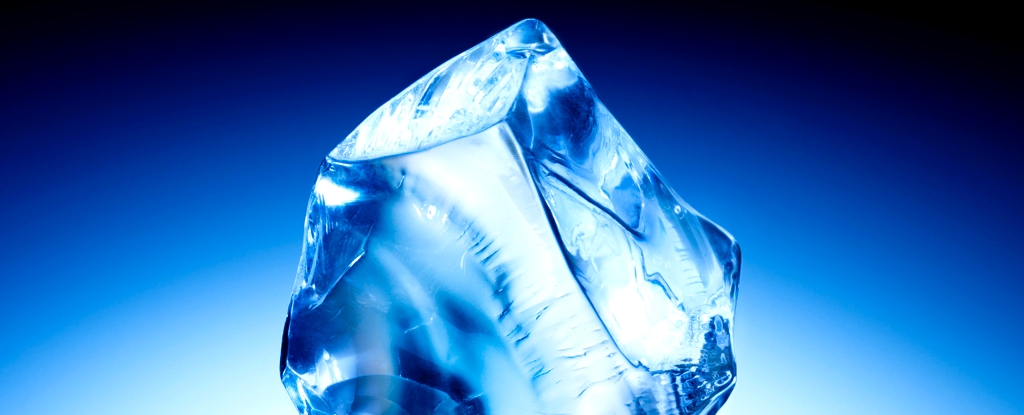Ice9
Bokononist rejoice!
Psh, old news. This is ice19. But please no one drop it in the ocean. Just to be safe.
I see they’ve discovered my ex-wife’s heart.
ex-wife: “sorry you’re not hot enough, unlike the next neighbourhood chad”
That never pans out well (for her)
Are you Surtur?
Oof. Sounds like you had a rough time of it :(
And if towards its core that planet had two superionic layers of differing conductivity, as Gleason and colleagues suggest Neptune might contain, then the magnetic field generated by the outer liquid layer would interact with each of them differently, making things stranger still.
this is badass… there might be multiple layers made of different phases of this superionic H2O “metal”, which generates convection currents of this stuff… Neptune and Uranus are weird inside…
Check out this planet shamer right here.
You’re weird inside, all gooey, goopy, and icky looking.
He aaid your anus was weird inside…
deleted by creator
i draw the line at keeping multiple phases of metallic water inside you, brother… that definitely makes you alien, and i’m pointing my finger and going “WTF”, i don’t care if that makes me a planet fascist…
holy shit now that is cool as fuck.
No, it’s hot as fuck. Rtfa much?
More like high pressure af! Hbu rtfa much?
deleted by creator
The real question is if there is something that can exist and “live” in the parts of the universe that are so unusual and beyond our experience, would we even recognize what it is if we saw it?
But Schulze-Makuch believes most of the experiments may have produced skewed results because they used too much water. (The labeled release, pyrolytic release and gas exchange experiments all involved adding water to the soil.)
“Since Earth is a water planet, it seemed reasonable that adding water might coax life to show itself in the extremely dry Martian environment,” Schulze-Makuch wrote. “In hindsight, it is possible that approach was too much of a good thing.” In very dry Earth environments, such as the Atacama Desert in Chile, there are extreme microbes that can thrive by hiding in hygroscopic rocks, which are extremely salty and draw in tiny amounts of water from the air surrounding them. These rocks are present on Mars, which does have some level of humidity that could hypothetically sustain such microbes. […]
But too much water can be deadly to these tiny organisms. In a 2018 study published in the journal Scientific Reports, researchers found that extreme floods in the Atacama Desert had killed up to 85% of indigenous microbes that could not adapt to wetter conditions.
Therefore, adding water to any potential microbes in the Viking soil samples may have been equivalent to stranding humans in the middle of an ocean: Both need water to survive, but in the wrong concentrations, it can be deadly to them, Schulze-Makuch wrote.
It was also discussed on Lemmy. Wish we could link to posts.
Maybe, we understand that self replicating chemical reactions are a thing, that the thing they are is basically a step away from life, and our scientists are looking for such things. Maybe the lay person won’t notice, but scientists may
It’s called IcyHot and they have it at Walmart. Old news
man, the universe is amazing. very neat find.
I mean, at the extremes, a bunch of things start acting weird. Cool gas down enough and it turns liquid, heat it up enough and you get plasma (?), put it under enough pressure and you get liquid (?), send strong currents through materials and they start acting weird too.
What makes this ice though? the structure?
So if we can produce this, can this have a practical use like in freezers/coolers. Or even in drinks? How cold is Ice XVIII and XIX?
How cold is Ice XVIII and XIX?
Up to 5000K at up to 200 GPa. So to answer your question:
can this have a practical use like in freezers/coolers. Or even in drinks?
No.
You’d add one cube to cool down your tea and it’d blow up your house.
It’s been a long day and somehow this comment really made me laugh. It’s so perfect and dumb. I love it.
The benefit of ice in drinks is its coldness, not its solidness.
But if your drinks aren’t chewy are you truly living?
Boba Fete
This is what low key genius looks like
deleted by creator
maybe not, BUT we probably know what the God Neptune uses to make that big trident of his
















